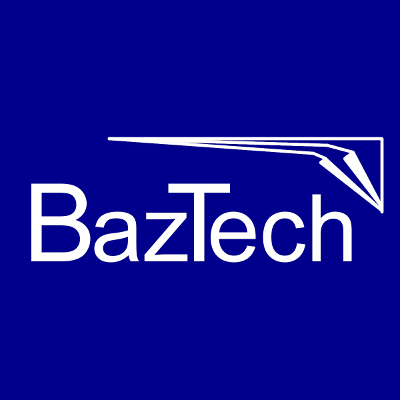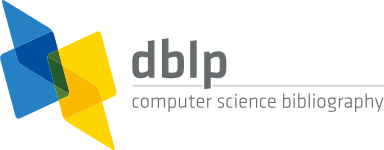| 2019 | |
| [1] | , "Usage, Retention, and Abandonment of Agile Practices: A Survey and Interviews Results", In e-Informatica Software Engineering Journal, vol. 13, no. 1, pp. 7–35, 2019.
DOI: 10.5277/e-Inf190101. Download article (PDF)Get article BibTeX file |
Authors
Indira Nurdiani, Jürgen Börstler, Samuel Fricker, Kai Petersen
Abstract
Background: A number of Agile maturity models (AMMs) have been proposed to guide software organizations in their adoption of Agile practices. Typically the AMMs suggest that higher maturity levels are reached by gradually adding more practices. However, recent research indicates that certain Agile practices, like test-driven development and continuous integration, are being abandoned. Little is known on the rationales for abandoning Agile practices.
Aim: We aim to identify which Agile practices are abandoned in industry, as well as the reasons for abandoning them.
Method: We conducted a web survey with 51 respondents and interviews with 11 industry practitioners with experience in Agile adoption to investigate why Agile practices are abandoned.
Results: Of the 17 Agile practices that were included in the survey, all have been abandoned at some point. Nevertheless, respondents who retained all practices as well as those who abandoned one or more practices, perceived their overall adoption of Agile practices as successful.
Conclusion: Going against the suggestions of the AMMs, i.e. abandoning Agile one or more practices, could still lead to successful outcomes. This finding indicates that introducing Agile practices gradually in a certain order, as the AMMs suggest, may not always be suitable in different contexts.
Keywords
Agile practices, Agile maturity models, survey
References
[1] P. Abrahamsson, O. Salo, J. Ronkainen, and J. Warsta, “Agile software development methods – review and analysis,” VTT Publications, Tech. Rep. 478, 2002.
[2] L. Williams, “Agile software development methodologies and practices,” in Advances in Computers, ser. Advances in Computers, M.V. Zelkowitz, Ed. Elsevier, 2010, Vol. 80, pp. 1–44.
[3] A. Solinski and K. Petersen, “Prioritizing Agile benefits and limitations in relation to practice usage,” Software Quality Journal, Vol. 24, No. 2, 2016, pp. 447–482.
[4] J. Nawrocki, B. Walter, and A. Wojciechowski, “Toward maturity model for extreme programming,” in Euromicro Conference, 2001. Proceedings. 27th, 2001, pp. 233–239.
[5] C. Patel and M. Ramachandran, “Agile maturity model (AMM): A software process improvement framework for Agile software development practices,” International Journal of Software Engineering, IJSE, Vol. 2, No. 1, 2009, pp. 3–28.
[6] A. Sidky, J. Arthur, and S. Bohner, “A disciplined approach to adopting Agile practices: The Agile adoption framework,” Innovations in Systems and Software Engineering, Vol. 3, No. 3, 2007, pp. 203–216.
[7] T. Schweigert, D. Vohwinkel, M. Korsaa, R. Nevalainen, and M. Biro, “Agile maturity model: A synopsis as a first step to synthesis,” in Systems, Software and Services Process Improvement, ser. Communications in Computer and Information Science, F. McCaffery, R.V. O’Connor, and R. Messnarz, Eds., 2013, Vol. 364, pp. 214–227.
[8] M. Leppänen, “A comparative analysis of Agile maturity models,” in Information Systems Development, R. Pooley, J. Coady, C. Schneider, H. Linger, C. Barry, and M. Lang, Eds., 2013, pp. 329–343.
[9] T. Schweigert, D. Vohwinkel, M. Korsaa, R. Nevalainen, and M. Biro, “Agile maturity model: Analysing Agile maturity characteristics from the spice perspective,” Journal of Software: Evolution and Process, Vol. 26, No. 5, 2014, pp. 513–520.
[10] O. Ozcan-Top and O. Demirörs, “Assessment of Agile maturity models: A multiple case study,” in Software Process Improvement and Capability Determination, ser. Communications in Computer and Information Science, T. Woronowicz, T. Rout, R. O’Connor, and A. Dorling, Eds., 2013, Vol. 349, pp. 130–141.
[11] Version One, 8th Annual State of AgileTMReport, 2013. [Online]. https://www.versionone.com/pdf/2013-state-of-agile-survey.pdf (Accessed May 2018).
[12] Version One, 9th Annual State of AgileTMReport, 2014. [Online]. https://explore.versionone.com/state-of-agile/9th-annual-state-of-agile-report-2 (Accessed May 2018).
[13] Version One, 10th Annual State of AgileTMReport, 2015. [Online]. https://explore.versionone.com/state-of-agile/versionone-10th-annual-state-of-agile-report-2 (Accessed May 2018).
[14] Version One, 11th Annual State of AgileTMReport, 2016. [Online]. https://explore.versionone.com/state-of-agile/versionone-11th-annual-state-of-agile-report-2 (Accessed June 2017).
[15] Version One, 12th Annual State of AgileTMReport, 2017. [Online]. https://explore.versionone.com/state-of-agile/versionone-12th-annual-state-of-agile-report (Accessed May 2018).
[16] N. Kurapati, V.S.C. Manyam, and K. Petersen, Agile Software Development Practice Adoption Survey. Berlin, Heidelberg: Springer, 2012, pp. 16–30.
[17] B. Murphy, C. Bird, T. Zimmermann, L. Williams, N. Nagappan, and A. Begel, “Have Agile techniques been the silver bullet for software development at Microsoft?” in Proceedings of the 7th International Symposium on Empirical Software Engineering and Measurement (ESEM 2013), Oct. 2013, pp. 75–84.
[18] M. Kropp, A. Meier, and R. Biddle, “Agile practices, collaboration and experience,” in Product-Focused Software Process Improvement. PROFES, ser. Lecture Notes in Computer Science, P. Abrahamsson, A. Jedlitschka, A. Nguyen Duc, M. Felderer, S. Amasaki, and T. Mikkonen, Eds. Springer, 2016, pp. 416–431.
[19] P. Ralph and P. Shportun, “Scrum abandonment in distributed teams: A revelatory case,” in The Pacific Asia Conference on Information Systems (PACIS), 2013, p. 42.
[20] J. Linåker, S.M. Sulaman, R. Maiani de Mello, and M. Höst, “Guidelines for conducting surveys in software engineering,” Lund University, Tech. Rep., 2015.
[21] C. Robson, Real world research, 2nd ed. West Sussex, UK: John Wiley & Sons, 2011.
[22] P. Rodríguez, J. Markkula, M. Oivo, and K. Turula, “Survey on Agile and lean usage in Finnish software industry,” in Proceedings of the ACM-IEEE International Symposium on Empirical Software Engineering and Measurement, Sept 2012, pp. 139–148.
[23] K. Petersen, “Is lean Agile and Agile lean?” Modern Software Engineering Concepts and Practices: Advanced Approaches, IGI Global, 2011, pp. 19–46.
[24] M. Kuhrmann, P. Diebold, J. Münch, P. Tell, V. Garousi, M. Felderer, K. Trektere, F. McCaffery, O. Linssen, E. Hanser, and C.R. Prause, “Hybrid software and system development in practice: Waterfall, scrum, and beyond,” in Proceedings of the 2017 International Conference on Software and System Process, ser. ICSSP 2017, 2017, pp. 30–39.
[25] A. Forward and T.C. Lethbridge, “A taxonomy of software types to facilitate search and evidence-based software engineering,” in Proceedings of the 2008 Conference of the Center for Advanced Studies on Collaborative Research: Meeting of Minds, ser. CASCON ’08, 2008, pp. 14:179–14:191.
[26] J. Saldaña, The Coding Manual for Qualitative Researchers. SAGE Publications Limited, 2012.
[27] N. Fenton and J. Bieman, Software Metrics: A Rigorous and Practical Approach, 3rd ed. Boca Raton, FL, USA: CRC Press, Inc., 2014.
[28] K. Petersen and C. Gencel, “Worldviews, research methods, and their relationship to validity in empirical software engineering research,” in Joint Conference of the 23rd International Workshop on Software Measurement and the 8th International Conference on Software Process and Product Measurement, 2013, pp. 81–89.
[29] S. Stavru, “A critical examination of recent industrial surveys on Agile method usage,” Journal of Systems and Software, Vol. 94, 2014, pp. 87–97.
[30] K. Beck, M. Beedle, A. van Bennekum, A. Cockburn, W. Cunningham, M. Fowler, J. Grenning, J. Highsmith, A. Hunt, R. Jeffries, J. Kern, B. Marick, R.C. Martin, S. Mallor, K. Shwaber, and J. Sutherland, “The Agile Manifesto,” The Agile Alliance, Tech. Rep., 2001. [Online]. http://agilemanifesto.org/
[31] H. Sharp and H. Robinson, “Some social factors of software engineering: The maverick, community and technical practices,” in Proceedings of the Workshop on Human and Social Factors of Software Engineering, ser. HSSE ’05, New York, NY, USA, 2005, pp. 1–6.
[32] L. Gren, R. Torkar, and R. Feldt, “The prospects of a quantitative measurement of Agility: A validation study on an Agile maturity model,” Journal of Systems and Software, Vol. 107, 2015, pp. 38–49.
[33] I. Nurdiani, S.A. Fricker, and J. Börstler, “An analysis of change scenarios of an IT organization for flexibility building,” in Proceedings of the 23rd European Conference on Information Systems (ECIS 2015), 2015.
[34] I. Nurdiani, J. Börstler, and S. Fricker, “The impacts of Agile and lean practices on project constraints: A tertiary study,” Journal of Systems and Software, 2016.
[35] A. Causevic, D. Sundmark, and S. Punnekkat, “Factors limiting industrial adoption of test driven development: A systematic review,” in Proceedings of the 4th IEEE International Conference on Software Testing, Verification and Validation (ICST 2011), March 2011, pp. 337–346.
[36] T. Dyba, E. Arisholm, D. Sjoberg, J. Hannay, and F. Shull, “Are two heads better than one? On the effectiveness of pair programming,” IEEE Software, Vol. 24, No. 6, Nov 2007, pp. 12–15.








